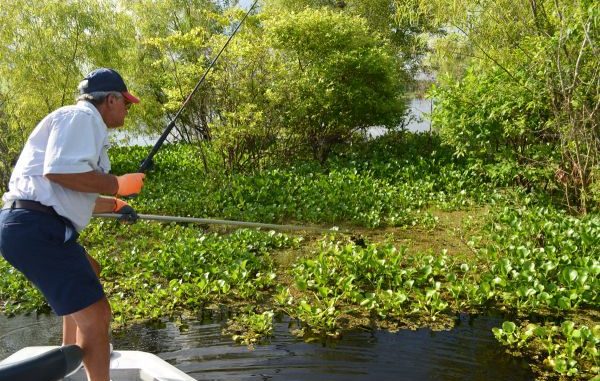
Murphy Royer’s confidence in his fishing is almost startling. During my first conversation with him, he asked me when I wanted to go fishing. I asked when the best time was to make a good trip.
His reply: “Anytime!”
After a pause, he expanded.
“I don’t stop,” Royer said. “I fish four to five days a week, year-round. I’ll do what it takes to catch them.”
He probably should have amended the last sentence to read, “I’ll do what it takes to catch them as long as I can use my jig poles.”
He never uses rods and reels.
“I use jig poles because it’s a whole lot easier,” Royer said. “I can sneak inside of lilies and catch them. I make a hole in the lilies and drop my jig in the hole.
“Making the hole makes them bite better because stirring the lilies makes food items fall out of their roots and makes sac-a-lait bite.”
To make the hole, Royer uses a homemade 10-foot-long, two-pronged aluminum rake. He doesn’t thrash the water with it, but simply moves the vegetation enough to make an opening the size of a double dinner plate.
To call Royer’s jig poles “simple poles” is a vast understatement. He cuts all the guides off the outside of each pole except for the one nearest to the reel. Then he drills a hole into the rod at an angle above the reel seat; he passes the line from the reel through the hole, up the center of the rod and out of its tip.
He makes tips for each rod out of stainless steel (not aluminum, which quickly develops grooves) pop rivets by removing the pin of each rivet mushrooming its tip. Super glue is used to attach the tips to the rods.
For many years, Royer used 10-foot B’n’M Bucks graphite jig poles. He is experimenting now, but seems to be settling in on Hi Tech Panfish Special graphite poles.
All his reels are Slater crappie reels, which he doubly secures to poles by wrapping the mounts with electrical tape.
His reels are spooled with 16-pound-test fluorocarbon line. The line choice, he said, has nothing to do with its invisibility in the water but rather with trying to avoid the memory of monofilament, which produces curls in the line.


